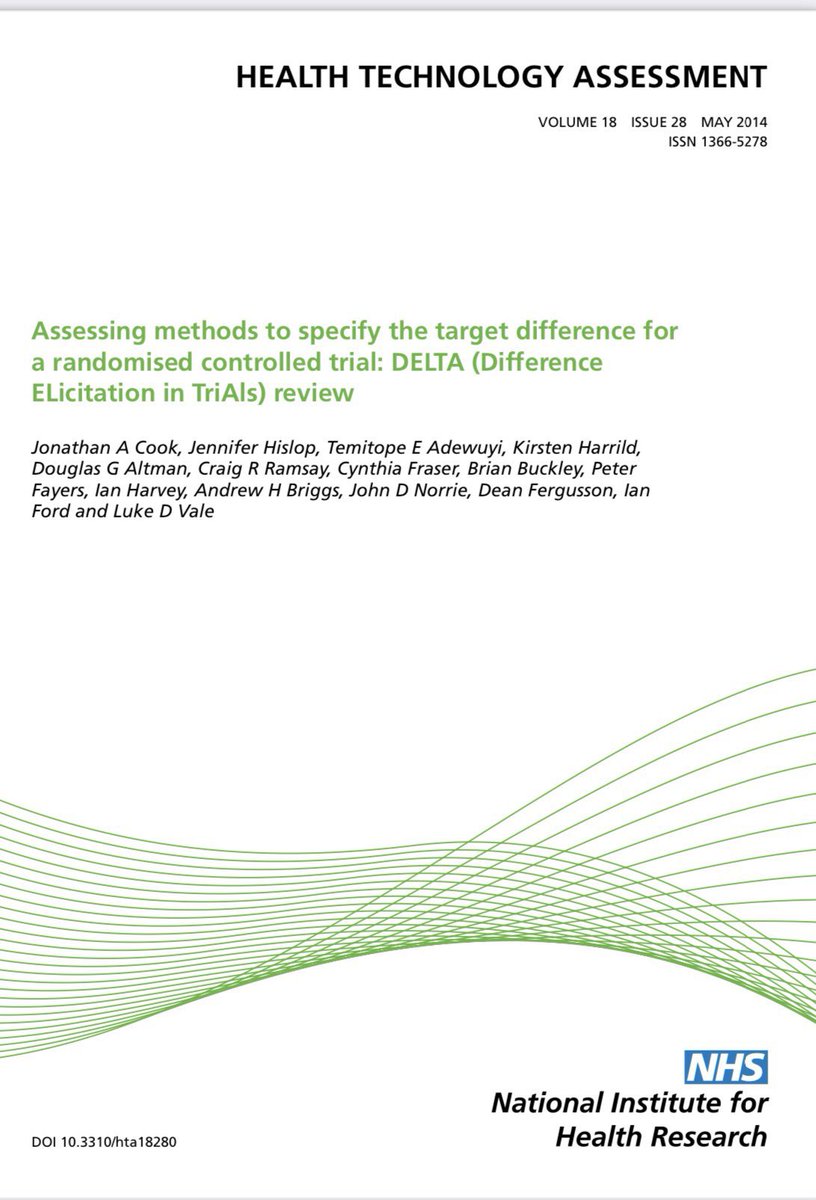We are all being rightly encouraged to be #efficient in our trial design & conduct. Efficiency comes primarily through design choices … whether classic or more modern efficient designs … a few reflections below 1/7
#MethodologyMonday
#MethodologyMonday
A #crossover design can be highly efficient. Each person acts as their own control removing large element of variation, making the design more powerful. The outcome needs to be short term however & the intervention can’t have a long-standing effect 2/7
bmj.com/content/316/71…
bmj.com/content/316/71…

This is particularly the case when a cluster design is also in play. A #ClusterCrossover design can majorly reduce the sample size requirements compared with a std cluster design. A good primer on this was published by @karlahemming and colleagues 3/7
bmj.com/content/371/bm…

bmj.com/content/371/bm…


Adopting a #factorial or partial factorial design also gives major reductions in sample size. Interventions need to have independent mechanisms of actions but if so, evaluating in a factorial design effectively allows 2 trials for the size of one 4/7
See: bmcmedresmethodol.biomedcentral.com/articles/10.11…
See: bmcmedresmethodol.biomedcentral.com/articles/10.11…

Modern #platform trials allow multiple interventions to be evaluated using a common underpinning framework. It also extends the factorial concept allowing randomisation to more than one intervention where possible maximising efficiency. 5/7 See:
jamanetwork.com/journals/jama/…
jamanetwork.com/journals/jama/…

A super-efficient design is the #MAMS (multi arm, multi stage trial design) developed by @MRCCTU. #MAMS incorporates both platform & adaptive concepts allowing high efficiency & rapid adaptation as needed. A useful explainer on #MAMS is here 6/7: mrcctu.ucl.ac.uk/our-research/m… 

Finally, you will never be totally efficient if you do not attend to your trial #retention! Retention is crucial to ensure an optimal analysis. @GilliesKatie leads a programme of research on optimising trial retention. Follow her for insights on this 7/7
cochrane.org/news/blog-rete…
cochrane.org/news/blog-rete…

• • •
Missing some Tweet in this thread? You can try to
force a refresh






